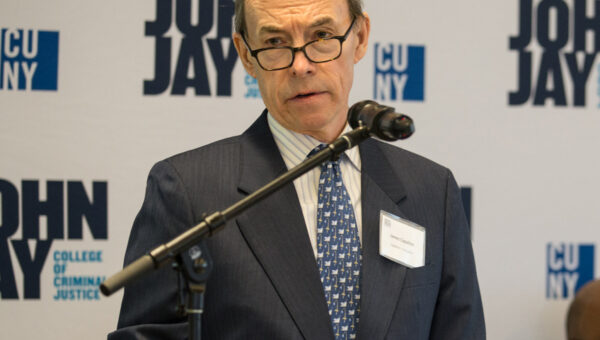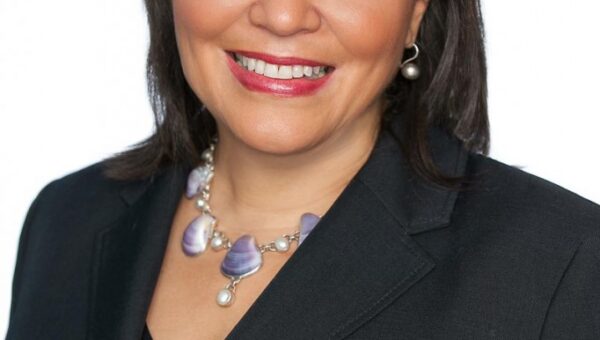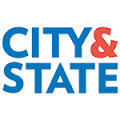
Building a CUNY Cultural Network in New York City
The Baruch College-Rubin Museum of Art Project creates opportunities for CUNY students to experience the richness and diversity of NYC’s arts and culture institutions.
New York City is one of the cultural capitals of the United States, home to some of the most well-respected and treasured institutions in the world. But not all New Yorkers have equal access. Having access to New York’s cultural institutions is critically important to developing engaged, well-rounded students and future members of our society. That’s why The City University of New York (CUNY) and the Shelley and Donald Rubin Foundation are committed to integrating the arts and culture into CUNY curricula across its 23 campuses.
On April 30, 2015, the Shelley and Donald Rubin Foundation hosted a unique gathering of leaders from City University of New York (CUNY), New York City based cultural organizations and City government officials. Almost 75 representatives came together to lay the groundwork for an ambitious vision–creating a city-wide cultural network by forging a collaborative partnership between the diversified population of CUNY and the arts and cultural institutions of the city. This conference is the first step for The Baruch College-Rubin Museum of Art Project, funded in 2010 by the Shelley and Donald Rubin Foundation, to develop approaches for integrating the arts throughout the curricula and create opportunities for CUNY students to experience the richness and diversity of NYC’s arts and culture institutions.
Among the 17 NYC cultural organizations in attendance were: El Museo del Barrio, the Metropolitan Museum of Art, the New York Philharmonic, Brooklyn Academy of Music, and the Museum of the City of New York.
The Baruch College-Rubin Museum of Art Project, led by Dr. Stan Altman of Baruch’s School of Public Affairs, has demonstrated practical ways to break down these barriers and forge effective college/cultural institution partnerships. CUNY faculty have used innovation grants to integrate the arts into their curricula in 50+ courses across 13 disciplines. The Rubin Museum, as the pilot project’s initial museum partner, hosted over 17,000 student visits since the fall of 2010 from CUNY colleges, with over 15,000 from the six CUNY colleges with formal partnership agreements.
The Rubin Museum benefited from the collaboration in five key areas: audience access, future donor cultivation, audience development, access to additional resources, and professional development. This collaboration presented the museum with a potential audience of more than 120,000 students, faculty, and staff across six colleges of CUNY.
Programs with similar goals can be found at other CUNY colleges, such the Cultural Passport at Macaulay Honors College and Arts Across the Curriculum at Hunter. CUNY students participating in these initial pilot efforts have found that these experiences enriched their personal and professional lives. Students who previously didn’t believe they would be welcome at these arts institutions have become comfortable accessing these important NYC treasures.
On April 30, 2015 First Lady Michele Obama headlined the opening of the new Whitney Museum. The First Lady shared how she felt growing up on the South Side of Chicago, “There are so many kids in this country who look at places like museums and concert halls and other cultural centers, and they think to themselves, ‘Well, that’s not a place for me – for someone who looks like me, for someone who comes from my neighborhood.’ I was one of those kids myself – I know the feeling of not belonging in a place like this.”
NYC Cultural Affairs Commissioner Tom Finkelpearl reiterated the City’s commitment to diversify the staff and leadership of cultural institutions throughout the City. Frank Sanchez, CUNY Vice Chancellor for Student Affairs, voiced his commitment to a CUNY/cultural institution partnership. Discussions are underway about creating a Student Cultural Passport to provide access to community-based arts institutions and to provide support for these organizations to mount effective partnerships with CUNY campuses. Vice Chancellor Sanchez voiced his support for this initiative underscoring the importance of CUNY’s taking a leadership role in order to expand the horizons of its students—many of whom are immigrants or first generation Americans for whom the arts are all too “foreign.”
On April 28, 2015, The New York City Council unanimously passed legislation which calls for NYC to develop a Comprehensive Culture Plan starting in 2017. Sponsored by Majority Leader and Chair of the Cultural Affairs Committee Jimmy Van Bramer and Council member Stephen Levin, Introduction 419 “will begin to analyze its current cultural priorities, determine how different communities are being served and how they propose to improve these services, study the condition of cultural organizations and artists in the city today, and plan how New York City can remain an artist-friendly city in a time of skyrocketing rents and a variety of economic pressures,” according to the Queens Gazette.
The diversity of projects integrating the arts into college curricula, as Baruch Professor Bruce Payne described, helps students see unusual ways of doing things – what he calls “the magic of arts.” Gilda Barbarino, the Dean of Engineering at City College described an innovative collaboration between the engineering students and the Dance Theatre of Harlem in which the students are using body mechanics to design shoes that extend the lives of dancers. John Jay Professor Erin Thompson described an Art Crime course that has been developed – underscoring how art thefts have fueled budgets of terrorist organizations.
All of these efforts emphasize the importance of including Arts to transform the STEM movement (Science, Technology, Engineering, Math) to STEAM (Science, Technology, Engineering, Art, Math).
CUNY recognizes the value NYC’s arts and culture bring to the learning enterprise. Focused conversations between the university and key officials from the vast cultural community offer all parties effective strategies and solutions for expanding CUNY’s cultural network — an outcome that further strengthens the CUNY degree, and the city’s cultural participation for years to come.
In a parallel effort, New York City recently launched the municipal identification program IDNYC for residents of all five New York City boroughs, ensuring greater access to government services and programs, financial services, education, cultural benefits, and health and wellness for all New Yorkers.
Over 100,000 applicants have enrolled since its establishment in January 2015. If you haven’t signed up yet, you can apply here.
Sign up for our weekly newsletter here to keep up with the latest news in NYS.



